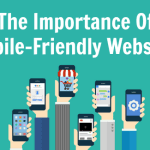Creating an effective website for your non-profit organization is crucial for reaching and engaging with your target audience, promoting your cause, and achieving your goals. A non-profit website design agency can help you design a user-friendly, visually appealing, and optimized website for your target audience. However, it’s important to keep in mind that a website alone is not enough to achieve success for your non-profit.
It should be part of a comprehensive digital strategy that includes social media, email marketing, content marketing and more. With that in mind, let’s look at some key elements that should be included in the design of a non-profit website to make it effective and successful.
- Clear Navigation
The navigation of a non-profit website should be clear and easy to understand. Visitors should be able to find the information they are looking for quickly and easily. Navigation should be consistent throughout the site, and the menu should be placed in a prominent location, such as the top of the page.
- Strong Visual Design
Visual design is an important aspect of a non-profit website. The design should be visually appealing, professional, and consistent with the organization’s branding. Using high-quality images and videos can help make the site more engaging and interactive.
- Effective Use of Calls to Action
Calls to action (CTAs) are important for a non-profit website. They are used to prompt visitors to take a specific action, such as making a donation, signing up for a newsletter, or volunteering. CTAs should be placed prominently on the site and should be clear, concise, and action-oriented.
- Optimized for Mobile
With the majority of web traffic coming from mobile devices, a non-profit website must be optimized for mobile. This means that the site should be designed to be responsive so that it looks and functions well on different screen sizes and resolutions.
- Accessible
A non-profit website should be accessible to all visitors, including those with disabilities. This means that the site should be designed to be easy to navigate and use for people with disabilities and should conform to accessibility guidelines and standards.
- Use of Social Media Integration
Social media is an effective tool for non-profit s to connect with and engage their audience. Integrating social media into a non-profit website can help to increase visibility and engagement and increase the reach of the organization. Social media buttons and feeds should be placed prominently on the site to encourage visitors to follow and share the organization’s content.
- Easy to update
A non-profit website should be easy to update and maintain. This means that the site should be built on a content management system (CMS) that is user-friendly and easy to use so that the organization can easily update and manage the content on the site.
- Use of Analytics
Analytics are an important tool for non-profit s to understand how their website is performing. The use of analytics can help to identify areas for improvement, such as which pages are receiving the most traffic and which pages are causing visitors to leave the site.
- In Conclusion
The design of a non-profit website is an important aspect of the organization’s online presence. A non-profit website design agency can help you create a user-friendly, engaging, and effective website that achieves your organization’s goals.
The key elements of a non-profit website should include clear navigation, strong visual design, effective use of calls to action, optimization for mobile, accessibility, social media integration, easy to update, and use of analytics. Hope the discussion was helpful and offered useful insights. Please feel free to share your insights with us regarding the discussion below in the comment section.





